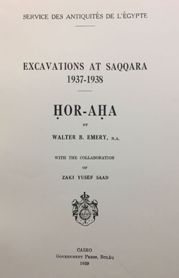| Main » Ad Board » ДРЕВЕН ЕГИПЕТ И АФРИКА » Археология |
| 18.11.2018, 21:26 | |
През археологическия сезон 1937-1938 известният британски египтолог Уолтър Б. Емъри (1903-1971) разкрива в района на Сакара гробница No 3357, предмети в която носят името на един от най-забележителните, но малко познати фараони. Хор-Аха ("Хор-Боец", XXXI в. пр. н.е.) е велик владетел, син на легендарния Нармер. Някои египтолози, между които пръв именно Емъри, считат него, а не баща му за Менес, цар-обединител на Горен и Долен Египет. Той е и основател на първата столица на страната - Инбу Хедж (Бялата стена), наречена по-късно Мен-нефер (Пребъдваща и красива), а от гърците Мемфис. Walter B. Emery - Excavations at Saqqara 1937-1938. Hor-Aha, Cairo, Government Press, Bulaq, 1939 - на английски език, от The Internet Archive, формат PDF.Свалянето става с десен бутон (downloading by right button) и Save as...
| |
| Views: 1129 | Placed till: 18.12.2018 | Rating: 0.0/0 | |

